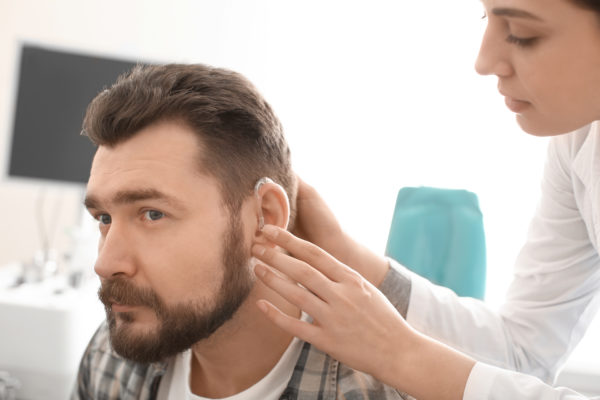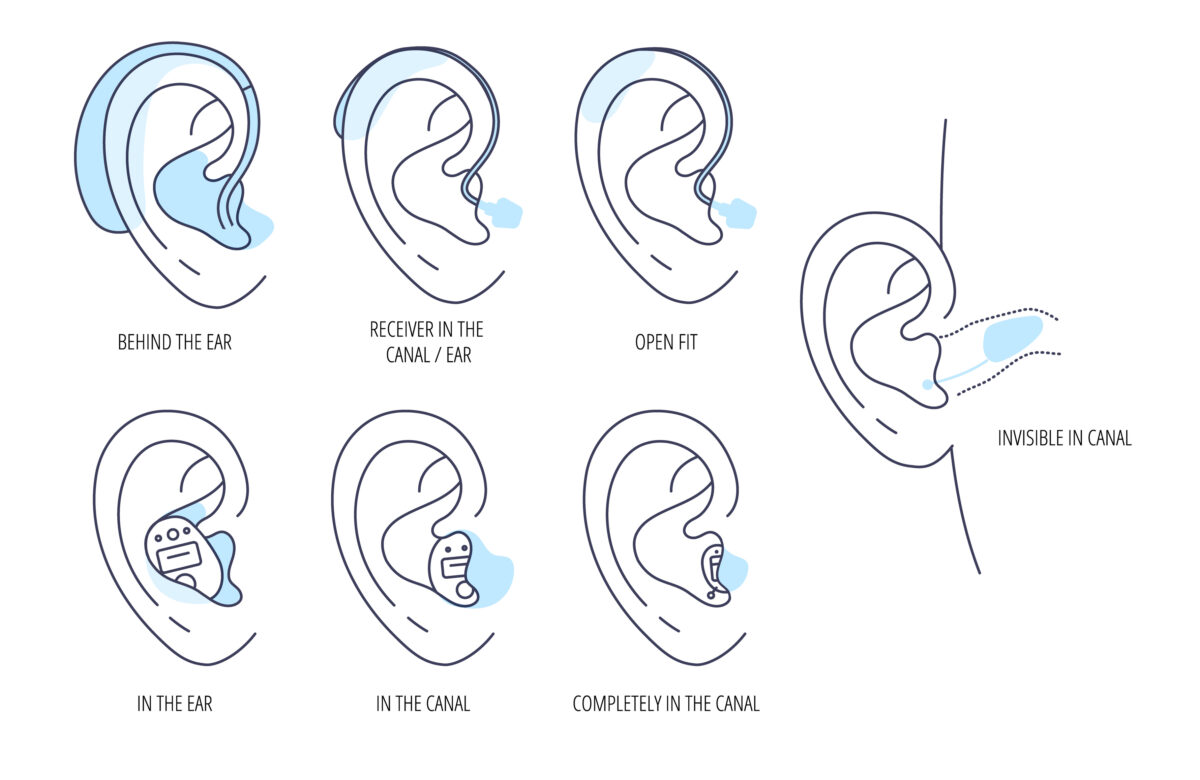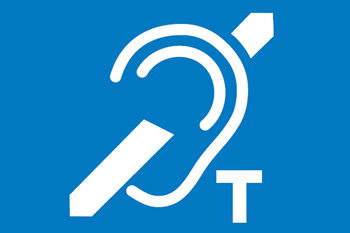What is a hearing aid?

In spite of the great variety of types, designs and technical features, hearing aids can all be described as small, wearable electronic devices which enable a person to hear sounds better and understand speech more clearly, providing an overall improvement in communication ability.
How do hearing aids work?
Almost all types work/function in a similar way even though the outcome needs to be different for each person.
Firstly, sound is taken in through a miniature microphone where the sound is converted into an electronic, digital signal.
Secondly, the signal is processed, boosted and modified to meet the needs of the user’s hearing loss.
Finally, a receiver (miniature loudspeaker) sends the processed sound through the type of ear fitting appropriate for your hearing aid system.
The audiology professional who tests your hearing will discuss whether and what type of device would help based not only on your hearing loss, but also on your lifestyle needs. Importantly, if you have hearing loss in both ears as most people do, you should expect to use two hearing aids; as one is almost always inadequate.
What are digital hearing aids?
Whether you go through the NHS or choose a privately service, all new hearing aids are digital. This means that they are programmed to suit the needs of both your hearing loss and your lifestyle.
It takes time to get used to them. You will probably need to have your hearing professional fine-tune them once or more after you’ve had some experience with them. It’s quite normal for changes to be made after fitting. Everyone is an individual and usually benefits from hearing aids being as personalised as possible.
All digital aids have different settings for different environments, like in a group, one-to-one conversation, in a quiet room or in noisier places. Make sure that your audiologist explains all your options when they fit your hearing aids. Always remember that they are your hearing aids, programmed to meet your individual needs.
What is the hearing loop/’t’ (telecoil) setting?
Most hearing aids have a ‘T’ (telecoil) programme for use with a hearing loop. These are found in many public places where you see the hearing loop sign (see right).
Make sure that you ask your audiologist if your hearing aids can be programmed so that the ‘T’ setting is activated. This will mean you can use them with hearing loops in public places and with ‘hearing aid compatible’ landline phones.
If your hearing aids don’t have a ‘T’ setting, ask about the best setting for telephone use. For mobile phones, you should ask how your mobile phone can connect wirelessly to your hearing aids as you can with many modern hearing aids.
What are the types of hearing aid?
There are lots of different types. The right kind for you will partly depend on your hearing loss, but there are other things to think about, too. For example, some people like to let others know about their hearing loss – or make a fashion statement – with a clearly visible aid. Others prefer a more discreet fitting that few will notice. It’s a personal choice, but please make better hearing your priority.

Here are some of the different types of devices available:
- Behind the ear (BTE): This aid has two parts: the main part goes behind your ear. This is connected by a thin, clear tube to an ear fitting that sits inside your ear canal. Some ear fittings are made individually from ear impressions. However, many people now use small ear tips not made individually, but which fit very comfortably.
- Receiver in the canal (RIC): This aid is like a BTE aid, but smaller. An almost invisible wire connects the hearing aid to a receiver (tiny loudspeaker) fitted within the ear fitting sitting in your ear canal.
- In the ear/canal (ITE/ITC): This sits completely within your outer ear (ITE) or just inside your ear canal (ITC).
- Completely in the canal (CIC) or invisible in the canal (IIC) aid. This goes deeper into the ear canal, making it nearly or wholly invisible. This is the most discreet kind of hearing aid but such tiny hearing aids may have hearing limitations for you.
How do you control the settings?
Some have controls you can use and some automatically vary their settings depending on the environment you are in. Others can be adjusted using a hand-held remote control or through an app on your smartphone. Always ensure that your audiologist discusses your preferences and the options with you to help ensure that you make fully informed and shared decisions.
How do you choose the right hearing aid?
There are so many different types of systems that you should be confident that there one which is right for you. However, there are a lot of things to be considered, so building a good relationship with your audiologist is important. They’ll be able to recommend ones that suit your hearing loss and lifestyle needs.
Not all providers can offer you every type. For example, if you use a NHS service, you’ll usually be offered behind the ear aids. They’ll be loaned to you for free, but will remain the property of the NHS. If you see a private audiologist, you can choose from a wider range of fitting styles, sizes and technical features.
Some providers may have arrangements with particular manufacturers, but it’s unusual for a private audiologist to provide only one company’s product. Most private providers offer a choice based on your personal needs and preferences
Adjusting to new hearing aids
It can take up to three months to get used to new hearing aids. What you experience will depend on your hearing loss, your lifestyle needs and how much you wear them.
Your brain will begin to register sounds that it has not heard well for some time. So you might feel tired by listening or overwhelmed by new noises. But, as you carry on using your new aids, your brain learns to recognise the new sounds and they become more acceptable. It’s important to keep going and, if you feel you need it, to ask for support from your audiologist as it’s part of their role to provide this.
You should talk about what to expect with your audiologist when hearing aids for you are first discussed. They’ll be able give you advice on the best techniques for getting used to them.
What is the cost of hearing aids?
The NHS can provide hearing aids at no charge on a long-term loan and all the extra support (appointments, tests, and consultations) is also free. You can usually get replacement batteries free of charge from your NHS audiology clinic. You might be charged for lost or damaged hearing aids.
The cost of hearing aids and professional services from a private audiologist can vary a lot. This can depend on the technology, fitting style, accessories and your individual needs. It could be anywhere from £300 to £3,000.
Your audiologist will ensure that you have a full understanding of the cost and all the services which are included. Most professional services and aftercare are included in the cost of hearing aids from private audiologists.
It’s important to make sure that any price comparisons between different private providers are like for like. Some professionals include a wider range of services than others and it’s particularly important to know what services you’ll have access to after your hearing aid has been fitted.
Ordering online
It’s possible to get hearing aids by ordering them online or through the post. These are usually basic amplifiers that come in standard settings. They won’t be tailored to your individual hearing loss. It’s in your best interests to have a face-to-face consultation where you can discuss your particular needs and be properly diagnosed.
Hearing aid insurance
Make sure that your system is covered for loss when you’re away from home. Most private providers can arrange insurance cover for you – but you might be able to include your device in an existing policy – such as one covering your household contents. The best advice is to discuss insurance cover with your audiologist and/or your home insurer.
Some companies offer stand-alone insurance. Search online or contact the Hearing Link Helpdesk to find out more.
Those prescribed on the NHS can sometimes be insured – check with your audiologist or local clinic staff.
Looking after your hearing aids
It’s really important to keep your device clean, dry and free for wax so they continue to perform well. Our online shop offers a variety of handy hearing aid maintenance tools.
Webpage updated: February 2024
